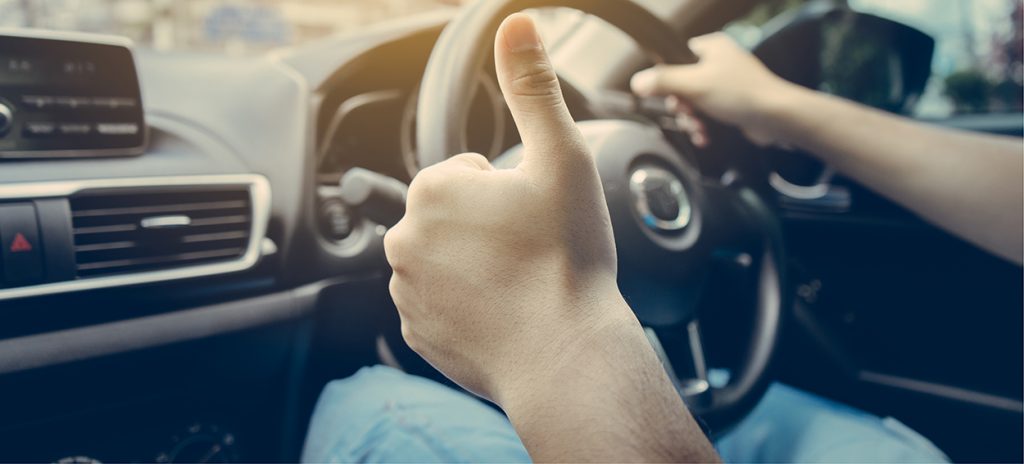How to be a better driver

According to the Association of British Insurers (abi.org.uk), around 650,000 car insurance claims are made each year, with payouts totalling around £8 billion. This is just the official figure however; it’s known that every year there are large numbers of scrapes and prangs that go unrecorded because the damage is too minor or a vehicle isn’t worth enough to risk losing a no-claims discount.
In the aftermath of many of these collisions it’s not unusual to hear a driver claim “there’s nothing I could have done” – but is this really the case? It’s also not unusual to hear or read about ‘dangerous roads’, when in reality it’s the drivers who use the roads who are often the problem. Of course some roads have poor sight lines, but instead of driving to the conditions, many drivers plough on regardless, assuming that if something goes badly wrong it will be someone else’s fault rather than theirs.
Change your mindset
Being a really good driver is as much about attitude as it is about ability. You could have the most incredible reaction times and observation skills, but if you don’t take responsibility for your driving or you fly off the handle every time somebody does something you don’t like, you’re a mobile hazard. Everybody makes mistakes and when behind the wheel people behave towards each other that they never would in a face-to-face situation.
The chances are you’ve got it wrong while driving and forced someone else to make allowances for you, so cut everybody some slack and just let them get on with it if they’ve been a bit daft. And if somebody is driving discourteously just turn the other cheek and put some space between you and them. Getting irate about it won’t lead to them changing their ways and at some point their behaviour will catch them out – but it’ll be their problem and not yours.
One of the key ways of helping yourself to relax on each journey is to leave in plenty of time so you’re in no hurry. Using an app or navigation system with live traffic that allows you to avoid the worst of the jams on a long journey could also save your blood pressure. Also, if you’re going on a really long journey switch drivers periodically or stop for a break to freshen up. Constant driving is only likely to make you tired and irritable. Having done the groundwork to make your life easier when driving, here’s how to ensure you don’t become another ABI statistic:
Read the road
The further ahead you look, the more time you have to recognise and respond to hazards. Always drive at a speed that ensures you can stop in the distance that you can see will remain clear.
Anticipate
Having looked further ahead, use that knowledge to anticipate the problems that might come up and plan for them well in advance to avoid having to take last-minute action. If there’s a moving hazard that might cross your path, don’t just assume that your route will remain unobstructed.
Use the two-second rule
Spot a marker ahead, such as a bridge or a lamp post, and wait until the vehicle ahead of you goes past it. Then say to yourself “only a fool breaks the two second rule”. If you’re at the marker before you’ve finished, you’re too close. Double it if the road is wet.
Concentrate
At 70mph your stopping distance is the length of a football pitch and looking away at a crucial moment can be fatal. In urban driving you’ll travel more slowly but the hazard density is much greater, so looking away at the wrong moment could be even more dangerous.
Assume the worst
Never assume that another motorist has seen you or will react as you expect – and don’t rely on somebody else’s reactions to keep you safe.
Look all around
Use your mirrors regularly so you have a 360-degree understanding of what’s going on around you. Use over-the-shoulder checks before you move out to solve blind spot problems.
Manage your personal space
If you keep space around your vehicle, you’ll have more time and room to deal with hazards. That’s easier said than done on busy roads, but don’t be tempted to tailgate because this is only likely to lead to a collision. Driving too close to the car in front will also lead to your car getting stone chipped which in turn is likely to damage the windscreen.
Minimise distractions
The biggest cause of car crashes in the UK is inattention, often because of the driver being distracted. You can’t really jettison your children before each journey, but you can switch off your mobile phone, not eat or drink while driving and even chatting to a passenger can be very distracting. So if there’s danger around just focus on the task in hand as much as possible by reducing distractions to a minimum.
No sudden movements
If you’ve scanned all around and used that information to predict what may happen, you should never be surprised by another vehicle’s movements. As a result you’re far less likely to spook other road users around you by having to brake suddenly or swerve.
Learn from your mistakes
Near misses happen to everybody. Afterwards, think how you could have avoided getting into that situation, even if you think it was the other road user’s fault.
Every time you drive you should try to follow these rules as best you can, but our roads are busy and other drivers don’t make it easy by cutting into your personal space and reducing your safety margins. Cyclists and pedestrians can do silly things too, but instead of getting angry you have to just let it go, because as soon as you get shirty things are only likely to escalate and that’s when people can be really unpredictable. Happy motoring!
Richard Dredge
February 2019



